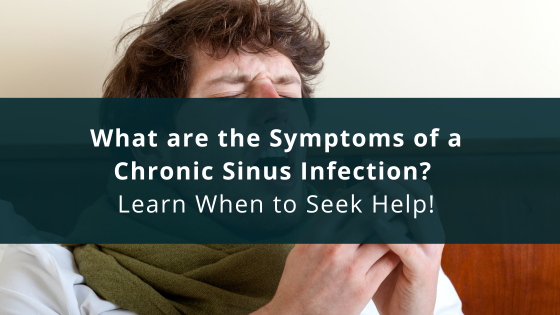Every year, infectious diseases affect millions across the globe. Infectious diseases are caused by microbes like bacteria, viruses, and fungi that easily spread and cause severe consequences. Some of them are well-known and easy to control; however, many others are difficult to control in efforts to improve public health. Awareness about the world’s most common infectious diseases is important for subsequently increasing public awareness of the need for prevention and improvement in treatment practices.
This article will discuss the five most common infections known to humans. Their symptoms, transmission modes, and prevention means will be evaluated so that we understand more about how to protect us and other people from all these diseases. The flu is one of the infectious conditions, but each has different ways of transmission, symptom manifestations, and control. So let us get into the basic details of these diseases and their global impacts.
Here is the Deal: 5 Most Common Infectious Diseases
This sustains infectious diseases pose a threat to the health of millions of people in nations and continents worldwide- every year. Some of the most common and widespread infections have, in fact, public health consequences that require continuous effort in prevention, treatment, and education. In this article, we highlight the five most widespread infectious diseases and their impact on the world regarding the public health level.
Tuberculosis:
Adolescents and, in fact, a large majority of the population reckon Tuberculosis (TB) as one of the heaviest bacterial infections today, despite all advancements made by medical science. Mycobacterium tuberculosis is the offending agent, mainly located in the lungs but may be present in other parts of the body. The disease is highly transmissible by aerosols, cough, and sneezing by infected persons.
Though Tuberculosis is treated with a variety of drugs, the treatment has become pretty difficult in a few areas due to drug-resistant strains; however, it continues to be one of the principal causes of mortality, especially in poor-resource countries that adversely affect healthcare through limited access and other resources.
Hepatitis B Virus:
Hepatitis B virus infection constitutes a viral attack on the liver as a poison for humans. This is the second most infectious disease in the world after human immunodeficiency infection. The most common way of transmission is the contact of an infected blood or other body fluid, such as that taking place at the time of birth, sexual intercourse without protection, and sharing of a syringe.
Long-term severe complications of this infection may include cirrhosis, liver cancer, and liver failure. It must be stated that hepatitis B does not have any curative treatment. Most patients can usually be controlled with antiviral agents, and the prevention is done by using a very safe and effective vaccine for infection. More than 250 million are reported to be chronically infected with hepatitis B across the globe.
Malaria:
Malaria is a serious infectious disease transmitted by an Anopheles mosquito bite carrying the Plasmodium parasite, which is global in nature but mostly common in the tropic and subtropic regions-in particular parts in sub-Saharan Africa, where they still remain largely affected. Its most important symptoms include fever, chills, fatigue, and a flu-like illness, and in the absence of treatment, it can lead to death. The disease impacts mostly children below five years of age and pregnant women.
Treatment drugs are effective, either through chemotherapy or antimalarials; however, complete resistance to the drugs has increasingly become a serious concern. Preventive measures against the conditions include using insecticide-treated nets and indoor spraying, as well as administering preventive medicine.
HIV/AIDS:
HIV (Human Immunodeficiency Virus) really attacks the immune system of a human host and then brings down resistance against any kind of infection or disease in the body. Untreated HIV will progress toward AIDS (Acquired Immunodeficiency Syndrome) with severe impairment of the immune system. These are the reason ways – unprotected sexual contact, sharing needles, and mother-to-child while giving birth – that transmit HIV.
As of now, ART is an incredible breakthrough for the management of the virus in the lives of people and helps them remain alive for so long in health, although no cure exists for HIV. It reduces the viral load level in your body; therefore, the chances of progressing into AIDS become very minimal to none, as well as the risk of transmission. Currently, the source funding for HIV/AIDS activities globally is prevention, education, regular tests, and ART services.
Influenza:
Influenza is popularly known as flu; it is a contagious viral infection that causes seasonal outbreaks, especially in cool months. It gets transmitted through coughing, sneezing, or talking to an infected person with respiratory droplets. The fever, cough, sore throat, tender body parts, and tiredness are the manifestations of this illness.
Most people recover in a period between a week and two; however, the illness may cause complications in very young children and older adults with frail immunity as well as in those whose immunity is deficient. Annually repeating the vaccination is the best means of controlling such a disease because the virus keeps changing, and mutations occur consistently. Besides just the vaccine, antivirals will limit how hard the symptoms hit and how long symptoms last when taken early on.
How to Take Preventive Measures to Reduce Infectious Disease Risks
Preventing an epidemic and infectious diseases is an essential public health task. Some good hygiene practices include washing hands frequently and using hand sanitizers. Vaccines are other important elements in the prevention of diseases such as flu, hepatitis, and measles. Mosquito nets and insect repellents also serve. Safe practices such as wearing masks and avoiding contact with sick people prevent airborne infections. Other factors that contribute to lowering overall risk are public health education, proper sanitation, and timely medical interventions.
The Importance of Vaccination and Public Health Initiatives
Vaccination is one of the hallmarks of an excellent tool in breaking transmission chains of infectious diseases. Vaccines protect not only the individual from an infection but also benefit the community by herd immunity. Vaccination programs have reduced or practically wiped out the diseases of smallpox and polio, among others. Public health initiatives are responsible for progressively widening vaccination coverage for underserved populations. Public health initiatives increase accessibility to vaccines, raise awareness of safety and efficacy, and generally address vaccine hysteresis so that meaningful collective coverage of at-risk populations cries out for their protection against outbreaks and helps reduce the global burden of infectious disease.
Conclusion: Fighting Infectious Diseases Through Awareness
Creating awareness about the infectious disease itself comprises its prevention and control resources. The transmission of infection might be significantly decreased by educating the public about safe practices, immunizations, and good cleanliness. Through the adoption of preventative measures, awareness-raising initiatives encourage people to take charge of their own and others’ health.
Further, an informed community is probably critical to participation in public health actions, ultimately leading to enhanced vaccine coverage and supporting timely medical intervention. Understanding such principles and practices will give me the opportunity to join efforts worldwide toward fighting these infectious diseases, enhance health outcomes globally, and work toward a healthier future for all.







